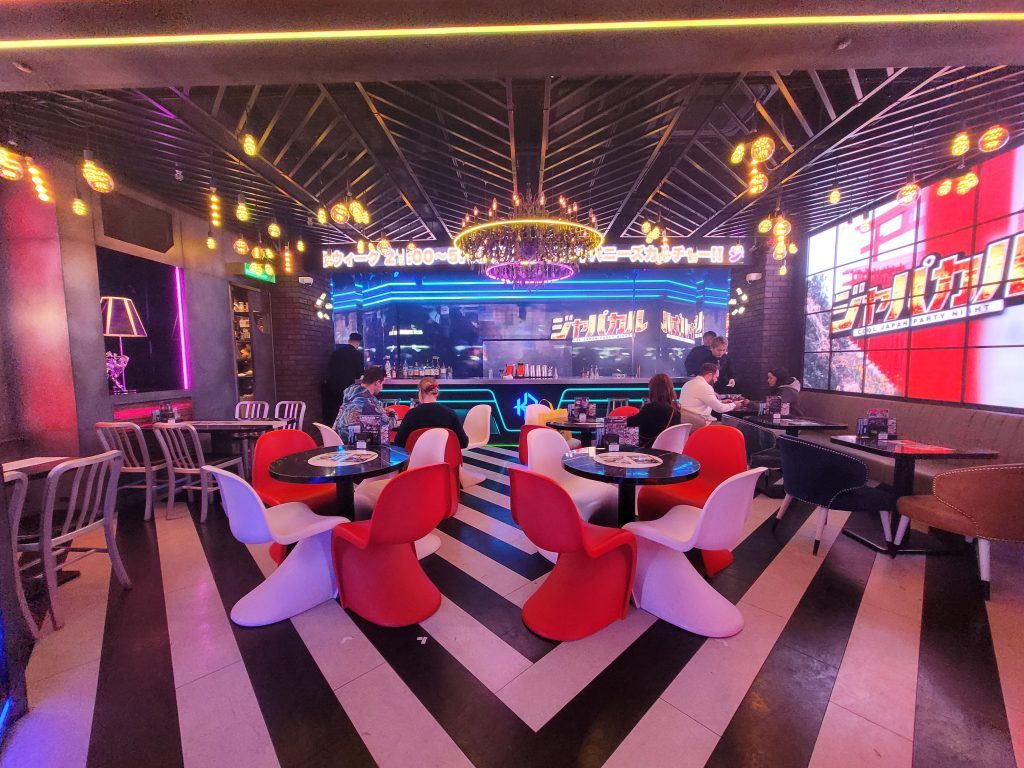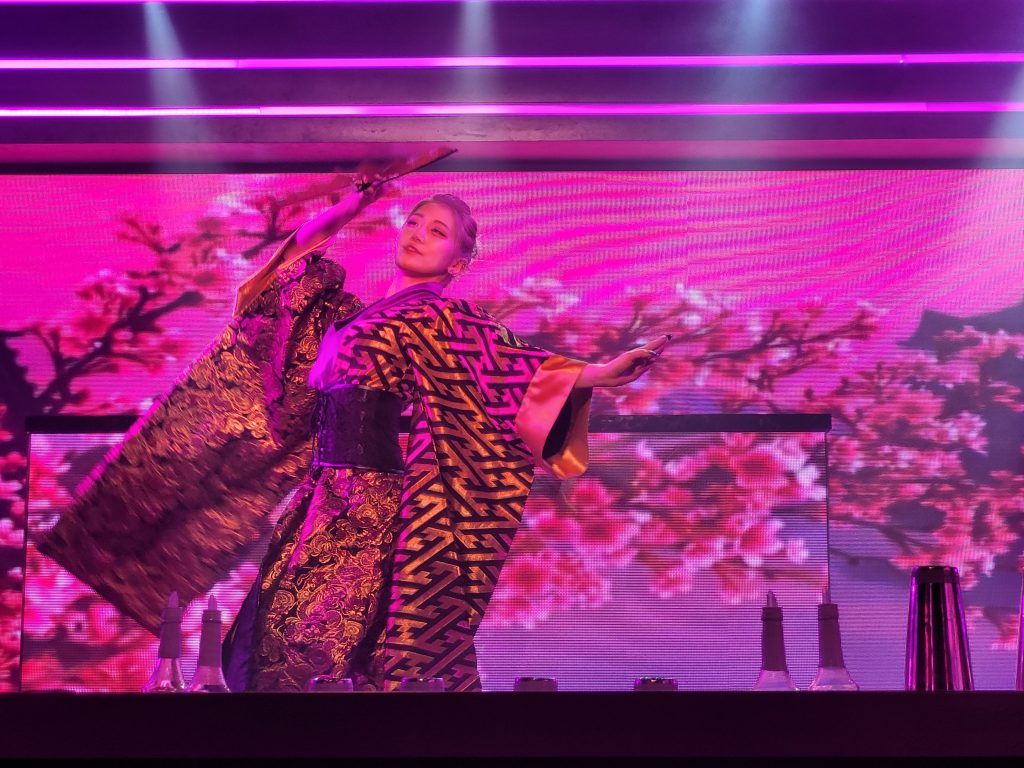The governmental capital of Tokyo, the neon-lined streets of Shinjuku arguably evoke the stereotypical image of modern Japan. The station, which is served by 12 different train lines, boasts the title of the world’s busiest train station. If you visit Tokyo, you will inevitably use the station at some point too. But while Shinjuku is known for drinking areas like Golden Gai, Omoide Yokocho (Piss Alley) and Nichome, it has a lot to offer for non-drinkers as well. Filled with endless corners of randomness, here’s a guide to some alternative things to do.
On this page
Kabukicho landmark spots
Godzilla Head
One of Shinjuku’s most iconic sights, the Godzilla Head looms dramatically over the Toho Building, home to Hotel Gracery Shinjuku and Toho Cinemas. Perched on the roof, this replica of the famous kaiju’s head comes complete with glowing eyes, roaring sound effects, and occasional smoke. Walk down the famous Godzilla Road and you can’t miss it.
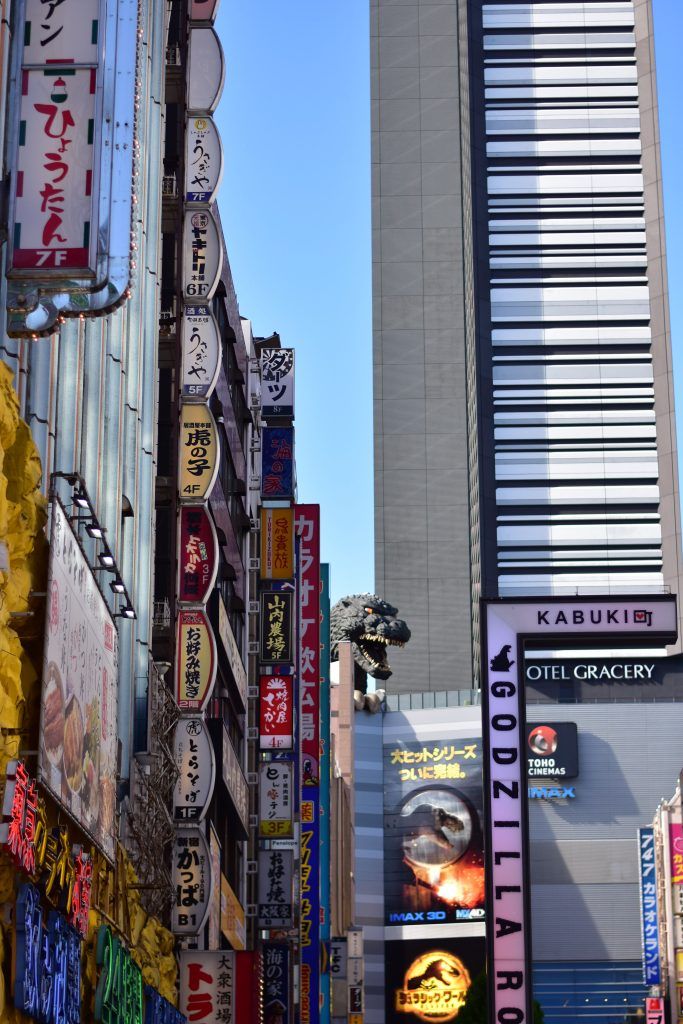
Kabukicho Tower
Opened in April 2023, Tokyu Kabukicho Tower is a massive entertainment complex that houses everything from luxury hotels to live performance restaurants to indoor amusement centers. Sitting across from the Godzilla Head, the 48-storey skyscraper features a futuristic design that almost makes it look like a digital render.
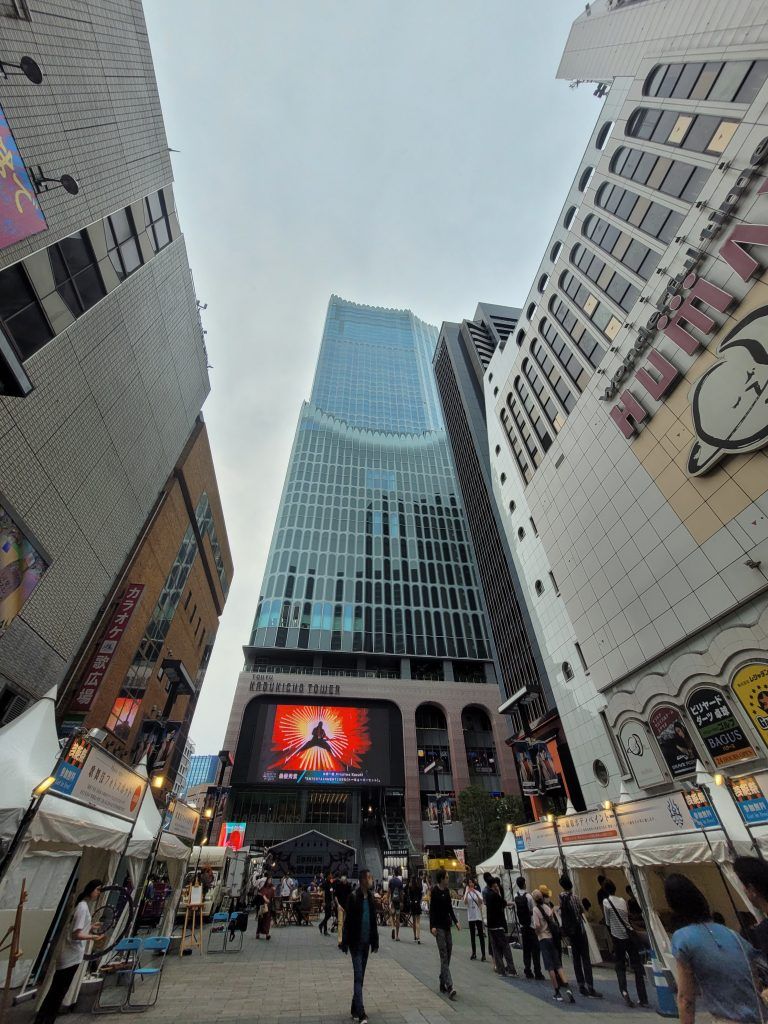
Neon-lit streets
As Tokyo’s infamous nightlife district, Kabukicho is home to a dazzling array of girls bars and host clubs. As the sun sets, the streets come alive with neon-lit billboards, store signs and dolled-up touts, presenting a smorgasbord of opportunities for night photographers.
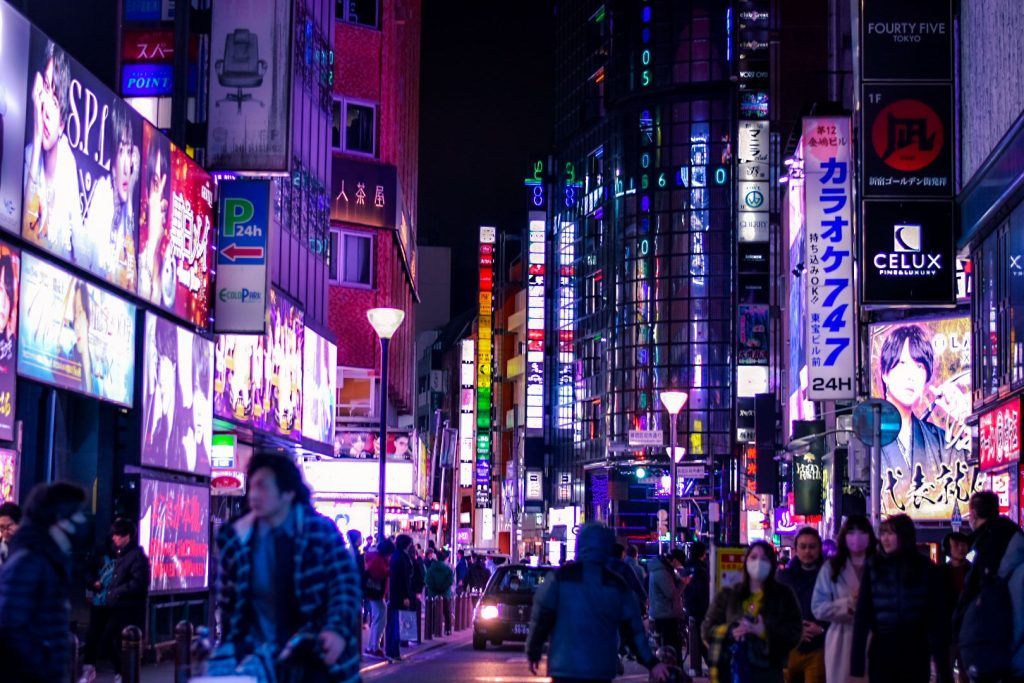
Tokyo Metropolitan Government Building
The Tokyo Metropolitan Government Building, known commonly in Japanese as 東京都庁 (Tokyo Tocho), is the City Hall of the capital. Its distinct shape of two towers linked by a sky bridge makes it fairly iconic, and you can find a range of souvenirs sporting the silhouette on the observation deck gift shops.

The general public can get a 202m high view over Tokyo from both the south and north towers. Best of all, it’s completely free of charge. To access either observation decks, you will need to take the Observatory Elevator from the 1st Floor of Main Building No. 1.
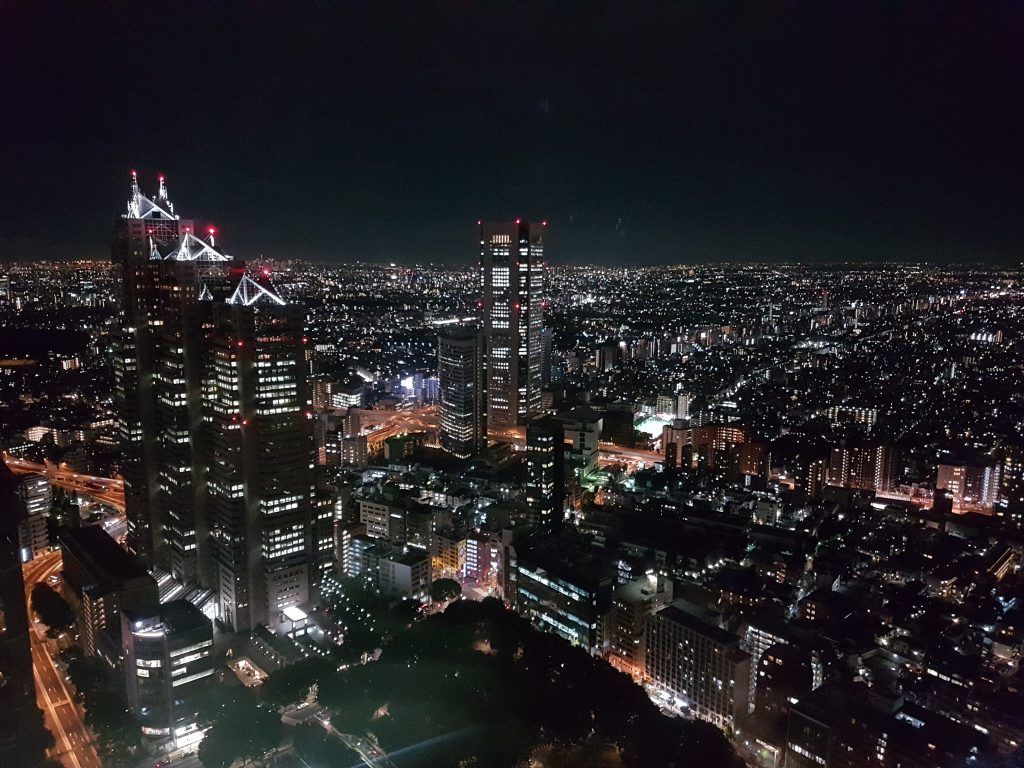
How’s the view? Pretty good for a free observation deck. During the day, it’s as good as any paid observatory, although the location doesn’t give you as central a view as Tokyo Tower or Roppongi Hills. I do have one gripe if going at night: they need to dim or switch off the lights inside the deck. The reflection against the glass makes it near impossible to see outside unless you press right up to it, which is difficult to do if crowded. You’re probably going to need a DSLR to get any decent shots, but tripods are generally not allowed. The deck also has a souvenir/toy store and a cafe bar, so you can sit and enjoy the view.
Opening hours:
North Observation Deck: 9:30am – 10:00pm. Closed first and third Tuesday of every month.
South Observation Deck: Currently closed until end April 2025.
* Last entry 30 mins before closing. *
If Monday or Tuesday happens to be a public holiday, the observation decks will open on that day and close the following day instead. Also, note that while they are closed over the year-end holidays, at least one observatory is open on January 1st itself. Check the latest schedule on the official site (EN) before going.
Getting there: Tocho-mae Station on the Toei Oedo Line.
TOKYO Night & Light
TOKYO Night & Light is a nightly projection mapping show that uses the Tokyo Tocho as a canvas, clinching it the Guinness World Record for “Largest architectural projection-mapped display (permanent.)” The shows started in early 2024 and feature various artistic displays, with Godzilla used as a recurrent theme.
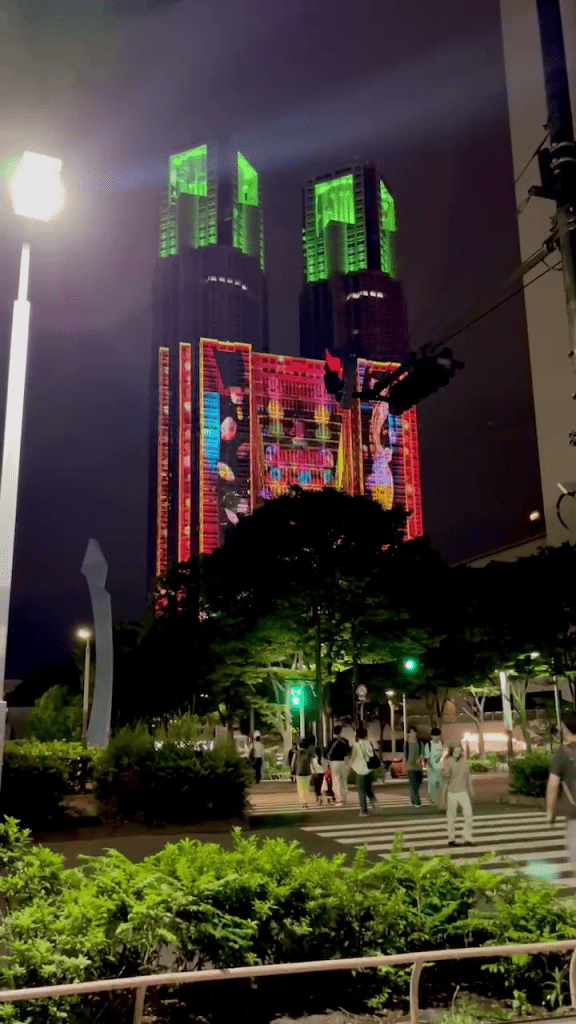
Screenings are held every half hour from 6pm to 9:30pm every night, bar inclement weather. Check the official website on the day to confirm if the show is running.
Shinjuku Gyoen National Garden
Completed in 1906, Shinjuku Gyoen was originally constructed as an imperial garden on the site of an Edo era daimyo‘s private mansion. After WWII in 1949, it was opened to the public and designated as a national garden. Nowadays, it’s a welcome 58.3 hectares of peaceful greenery amidst the concrete jungle, and is especially popular as a hanami spot. Because the garden boasts more than a dozen different varieties of sakura trees, you can see different stages of blooming at any time during cherry blossom season.
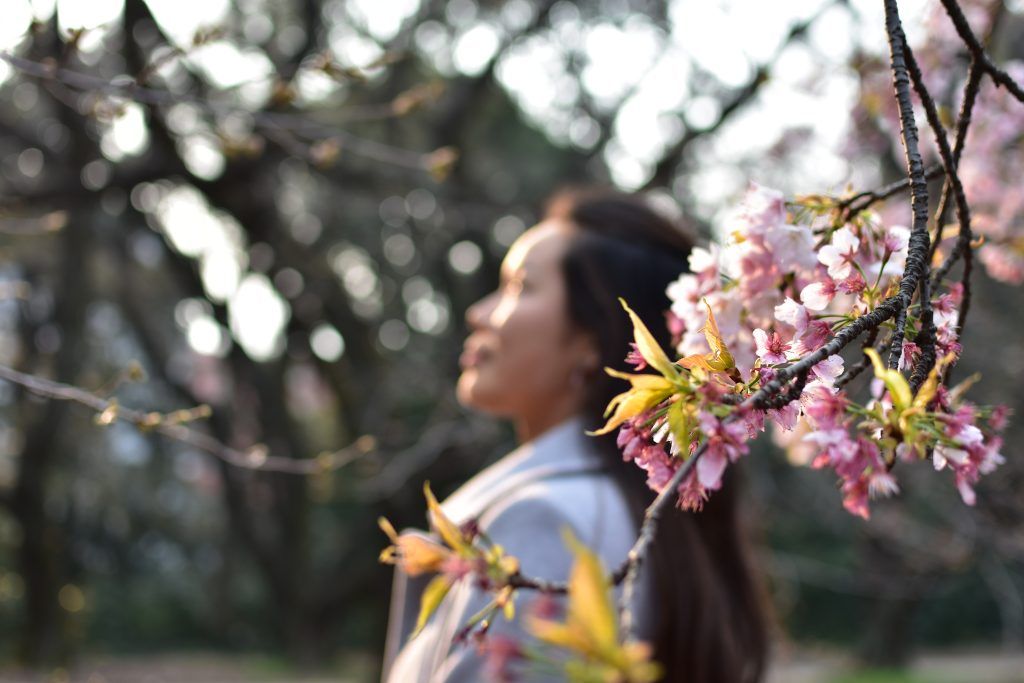
The garden comprises of three styles: a Japanese traditional garden, a French formal garden, and an English landscape garden. There is also a greenhouse and a “Mother and Child’s Forest”.
Opening hours: 9am – 4pm (5:30pm from mid-March to Sept.) Closed Mondays.
Getting there: Shinjuku Gyoenmae Station on the Tokyo Metro Marunouchi Line is the closest.
Cost: 500 yen per adult, 250 yen for high school students/seniors 65 years and over
(Crane) Game arcades
The bustling district of Shinjuku also has a nice selection of game arcades. At least nine, in fact. Check out the dedicated blog post to get the full lowdown and map. >> Best Places to Play Crane Games in Shinjuku
Tokyo Mystery Circus
This entertainment facility, which opened in Kabukicho in December 2017, features a collection of escape rooms and other interactive games across five storeys and one basement.

You can read more about TMC and our experience completing an escape room here >> Tokyo Mystery Circus: A Fun Way to Work the Brain
Shin-Okubo Korea Town
As the name suggests, this area of town just 15 minutes walk from Shinjuku is the place to go for a taste of Korea. Featuring a dense cluster of Korean restaurants, cafes, supermarkets and shops, it’s almost like you’ve stepped into Seoul. You’re sure to hear Korean and K-pop music as you stroll down the street, trying to decide whether to eat yakiniku, fried chicken or cheese dakgalbi.
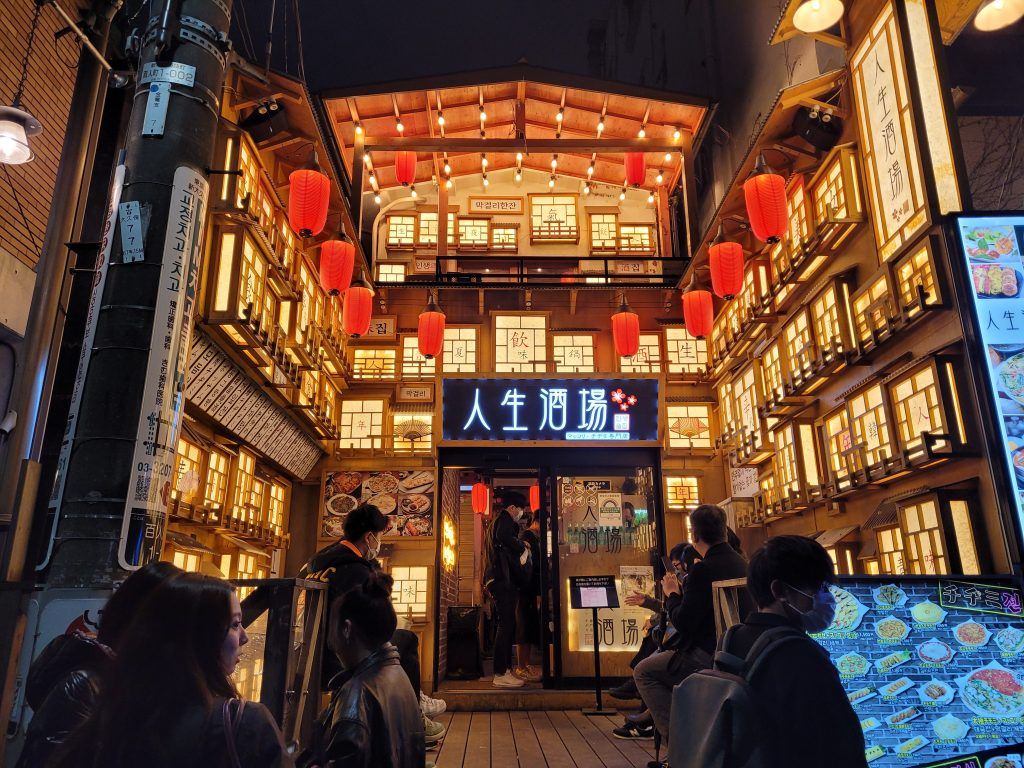
There are also magical looking eateries like Jinsei Sakaba (shown above), and pop-up stores in line with the latest Korean-inspired trends, such as Squid Game.
Getting there: Shin-Okubo Station on the JR Yamanote Line, or Okubo Station on the JR Chuo-Sobu Line.
Cyberpunk-themed spots
Robot Restaurant (permanently closed)
Even though this place no longer exists, and has been replaced by a so-called Samurai Restaurant, it deserves an honourable mention for being one of the most iconic Shinjuku spots for years. I don’t think words are sufficient to describe what exactly this was. Tacky to the point of being “so bad it’s good,” it’s the type of surreal experience you either loved or hated. The name was slightly deceiving as it was not a restaurant, and there weren’t really that many robots.
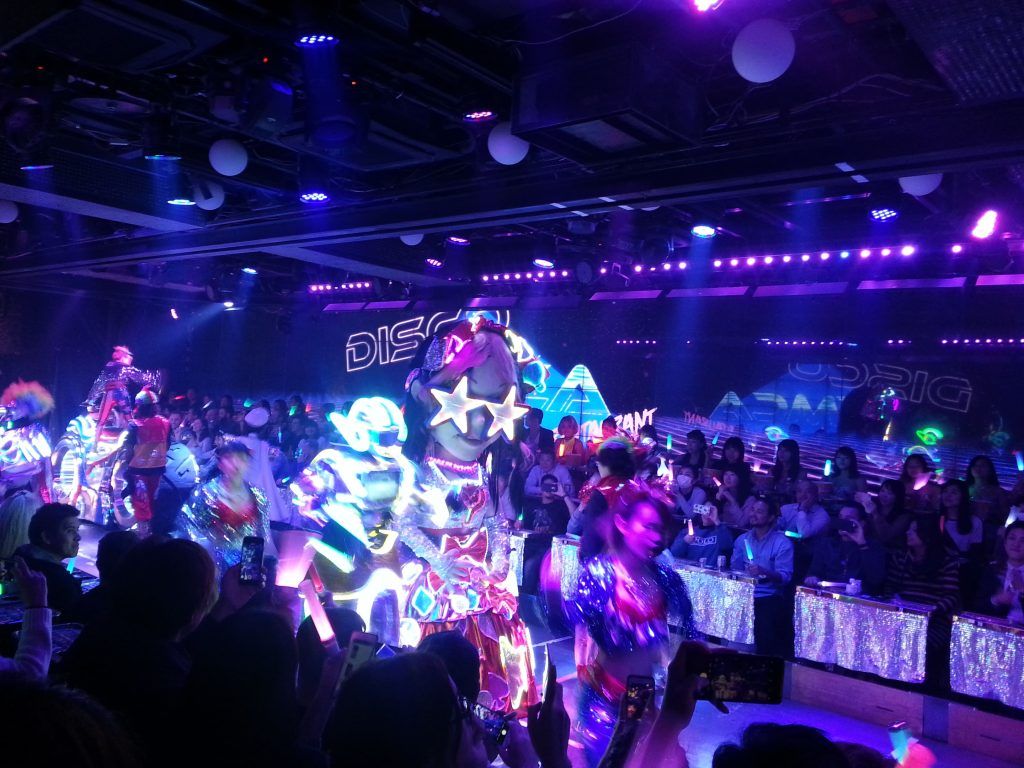
The show started in 2012 and it drew thousands (maybe even tens of thousands) of foreigners, mostly from the West, in the eight years it was open. For some reason, it didn’t seem as popular with the Asian crowd, who probably preferred to spend the same amount to go to Disneyland. At around 8,000 yen, the price was pretty steep given that it was not inclusive of any food or drinks. Many disgruntled visitors slammed it as tourist trap due to the peddling of merchandise during the intercessions. However, you were never forced to buy anything, and you could take as many photos as you wanted. Plus, there was nothing like it elsewhere, making it worth shelling out the yennies to experience the pure kitsch.
The 90-minute shows were held 4 times a day: 16:00, 17:55, 19:50, and 21:45. My favourite segment was the one with dancing robots and lasers and neon-suited men. And even if you didn’t want to watch a show, you could still take a photo with two giant female android statues for free.
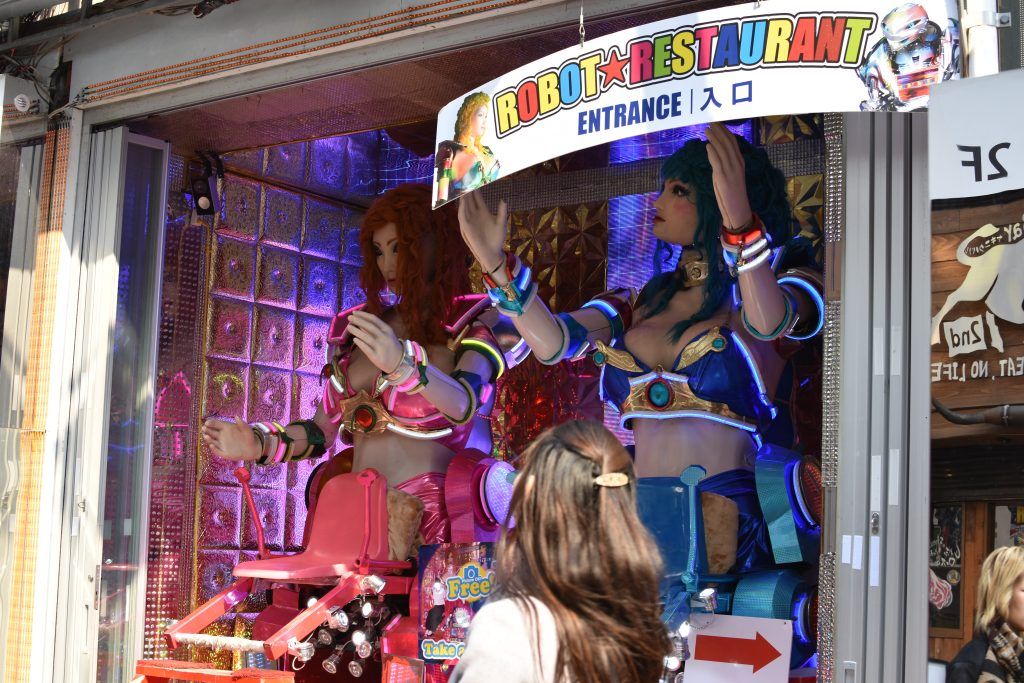
Neo Shinjuku Atsushi
Neo Shinjuku Atsushi features an interior reminiscent of a post-apocalyptic world, complete with a pseudo-food alley that captures the essence of a crumbled Tokyo. The menu aligns with this theme, offering “future meals” such as vacuum-packed retort burgers that can be stored at room temperature and insect drinks.
Ryu no Miyako Inshokugai
The Ryu no Miyako Inshokugai (literally dragon capital food street) in an underground food court that offers 17 distinct eateries under one roof. Each restaurant boasts its own theme, creating an atmosphere reminiscent of a dystopian cyberpunk world. You don’t have to dine here, but can just go down and take photos. Located near the east exit of JR Shinjuku Station, this complex comes from the creators of Shinjuku Kabuki Hall in Kabukicho Tower, Shibuya Yokocho and the newly-opened Grand Hammer in Shimbashi.
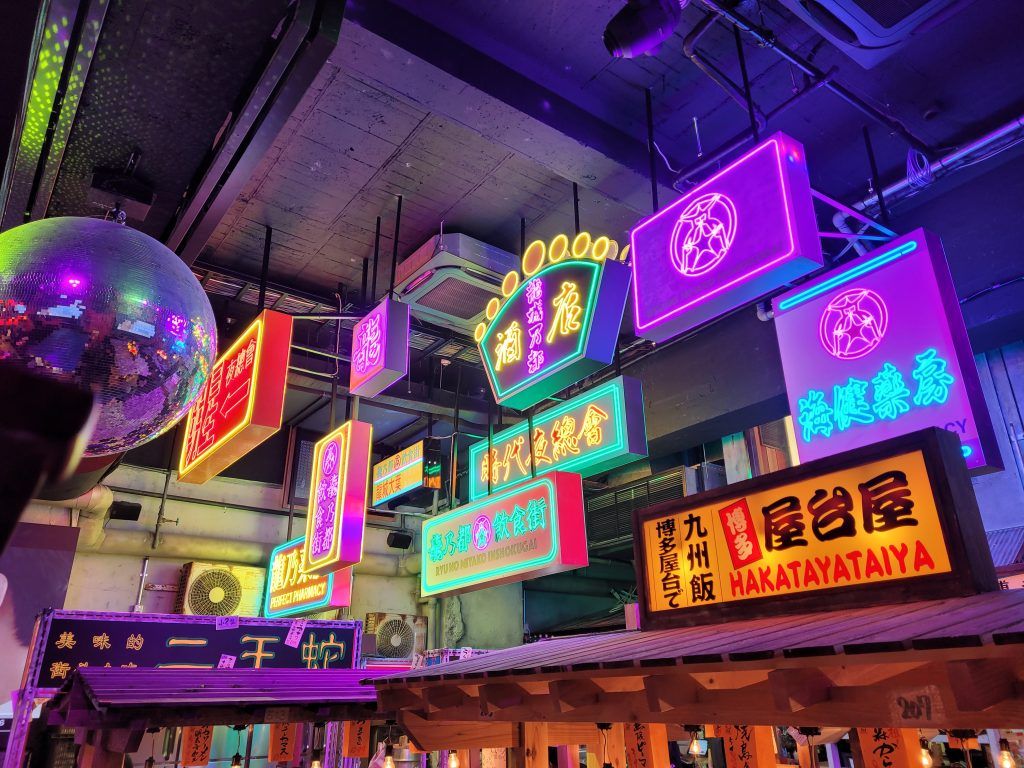
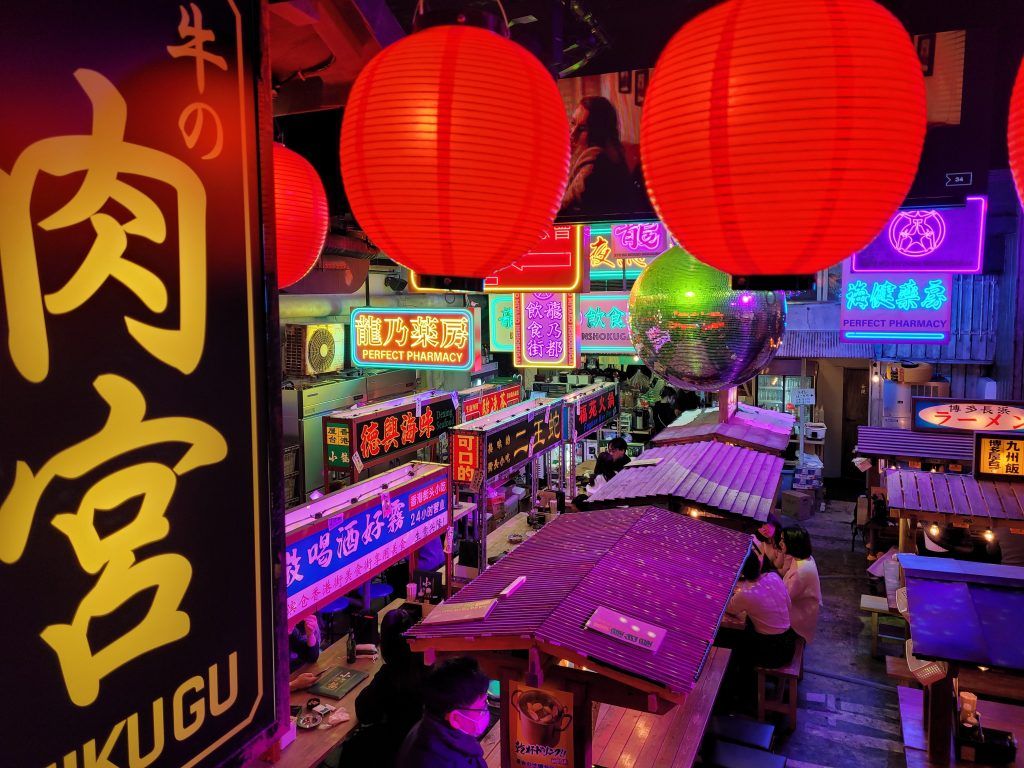
Kujira
Kujira is an entertainment dining bar in Kabukicho where guests can enjoy a variety of shows while indulging in drinks and Italian fusion cuisine. Their signature “Cyberpunk Girls” will welcome you and transport you into a futuristic cyberpunk world. While the show and customer service was great, every food or drink we ordered came with an included 100% “tip” for the server, which essentially doubled the price of whatever was shown on the menu. While it is pretty standard for nightlife places to tack on service charges and tips, be aware that your bill might end up higher than expected.
